MAY 11, 2022 Wednesday:
Checked out, drove to Queralbs, parked the car, took the rack railway to Vall de Nuria, came back down, explored the village of Queralbs, then drove on again on Eje Pirenaico/N-260 [Pyrenees Axis road] to Vielha, Val d'Aran
STAY: Aparthotel Nou Vielha, 2 Nights
DRIVE TO QUERALBS
We went to the train station at 8.30 and saw that tickets were available only for 9.45. We bought the tickets with combo of the cable car also and the return ticket on the funicular we chose as 12.
We had left our bags packed at our hotel because we did not want to leave our luggage in the car boot when it was parked at the train station. Now we had no choice. We drove back the 6 km to the hotel and checked out
We did not have time for hikes. So went back to the cable car statyion. Had a wait of some 15 min and then got on to the cable car that came up.
Lovely views once again
Beautiful sight
Saint Gil Hermitage...
and then drove to the train station. Parked the car with the back to the wall. Our train came and we boarded it
FUNICULAR/Cremallera
The only access to Vall de Núria is on the funicular railway that departs from Ribes de Freser and after 2 intermediate stops comes to Queralbs which is the last stop. The journey covers 12.5 km totally, climbing 1,000 metres in 40 minutes. The stunning views to be had on the ride are a small taste of the beauty, peace and harmony that await us in the valley above.
We wanted to enter Queralbs and enjoy its beauty also. So we chose to drive to Queralbs and take the train from there instead of from the origin.
From Queralbs, we took the last 6 km of the impressive rail and reached Vall de Núria mountain resort located in the Eastern Pyrenees.
It sits in a high-altitude bowl at over 6,076ft/1852m surrounded by high peaks the largest of which is Puig Mal.
Vall de Núria from the heights
With the remodeled Coma del Clot Cable Car, we can access the Alberg Pic de l’Àliga and a viewpoint with spectacular views of the valley and the peaks surrounding it.
It brings hikers to the mountains for the start of their ascents with a drop of 152.7 m, reaching a height of 2,121.6 m.
The start of the walk with the Coma del Clot cable car is located in the same Vall de Núria and has its arrival at the Alberg del Pic de l'Àliga, located at 2,170 meters above sea level, and from where we can enjoy panoramic views.
Low season - Travels every 15 minutes. It's timed with the rack rail, so we got on to the cable car.
Alberg del Pic de l'Àliga
Enjoyed awesome views of the valley and the surrounding peaks.We did not have time for hikes. So went back to the cable car statyion. Had a wait of some 15 min and then got on to the cable car that came up.
Lovely views once again
Got back to the train station.
Our return ticket for the train back to Queralbs was at 12. We quickly set out to enjoy the sights... the Sanctuary of Nuria, the Saint Gil Hermitage, and the garden or lake in front of itVall de Núria
Vall de Núria is situated in the eastern Pyrenees, at 2,000 metres above sea level, surrounded by peaks close to 3,000 metres that form the stunning backdrop of a huge natural amphitheatre
Sanctuary of Núria
The Virgin of Núria
Saint Giles (Catalan: Sant Gil) arrived in the valley in approximately 700 AD and lived there for four years. He crafted an image of the Virgin Mary and hid it in a cave when forced to flee from persecution by the Romans against Christians. Along with the image of the Virgin, he left a pot used for cooking, a cross, and a bell for calling shepherds to meals.
a pilgrim named Amadéu began searching for the image in 1072, after having a prophetic dream. He built a small chapel for pilgrims, and found the image seven years later, next to the pot, the cross, and the bell, and he brought the objects to the chapel to be venerated.
The image has been dated to have been made during the 12th or 13th century. It is a wooden Romanesque carving. The primitive-looking polychrome statue retains its painting intact.
The shepherds regarded the image of the Blessed Virgin as a patron saint of fertility
The Vall de Nuria has been a place of pilgrimage since St Giles (San Gil) arrived here around 700AD. Just inside the Sanctuary we can put our head inside a large metal pot and have the bell rung above.
After enjoying the lovely church we went toward the lake.
RIO DE NURIA
The Nuria river is born in Lake Nuria , in the Nuria valley , at the confluence of the Finestrellas, Eina and Noufonts streams, where an artificial reservoir has been created.
Saint Gil Hermitage...
Saint Gil Hermitage
RACK RAILWAY BACK TO QUERALBS
Parallel to the river Nuria, a path, known as Cami Vell, runs between the town of Queralbs and the sanctuary of Nuria . Used since the Middle Ages, it was modified in 1931, when the Nuria rack railway was built to access the sanctuary, since no road has been built, due to the difficulties of the route. The route between Queralbs , at an altitude of 1200 m, and the sanctuary, at 1920 m, is 7.1 km long.
Along the route, the Cremal bridge over the Nuria river, and the Sastre and Cola de Caballo waterfalls stand out
QUERALBS
We got down at the 1st stop and got into our car. Drove some 200 m or so and parked at the entrance of the village.Queralbs, at an altitude of 1,236 metres, is the last vehicle-accessible village on the way up to our mountain valley destination.
This tiny mountain village has a population of only 200 permanent residents living in a rambling collection of traditionally built stone houses. Perched on the side of the mountain, this quaint, picture postcard beautiful hamlet is memorable .
Sant Jaume Church:
Romanesque church from the 12th century. The porch stand out, made up of six arches which are supported by five blue columns, making the ensemble one of the best and most well-preserved examples of Catalan Romanesque architectur still standing today. During the 15th and 17th centuries the original structure urdenwent some modifications such as the extensions of the central nave with two square chapels; the construction of a sacristy with a chapel; and the building of a bell tower crowned by a small gable tower.
Then we drove on to our next destination base Val d'Aran .
Report continues here
Val d'Aran/ Aran Valley
620.47 square kilometres (239.56 sq mi) in area, in the Pyrenees mountains, in the northwestern part of the province of Lleida.
This valley constitutes the only contiguous part of Catalonia located on the northern side of the Pyrenees. STUNNINGLY BEAUTIFUL.









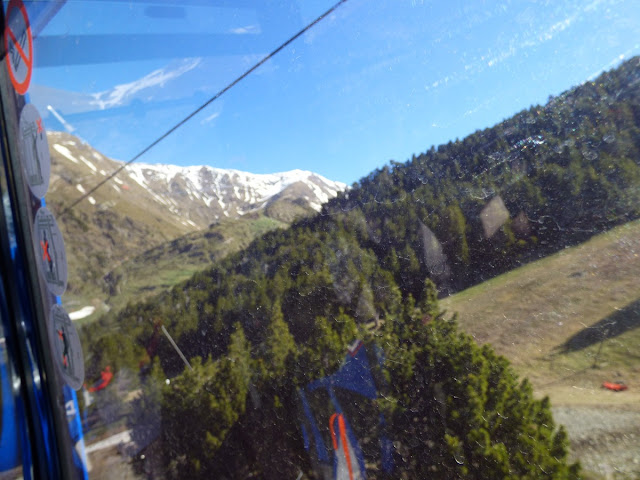










































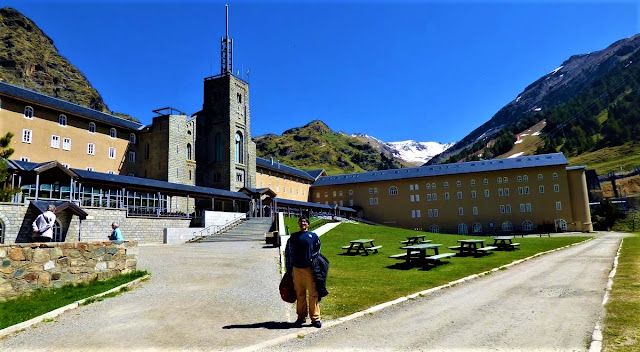







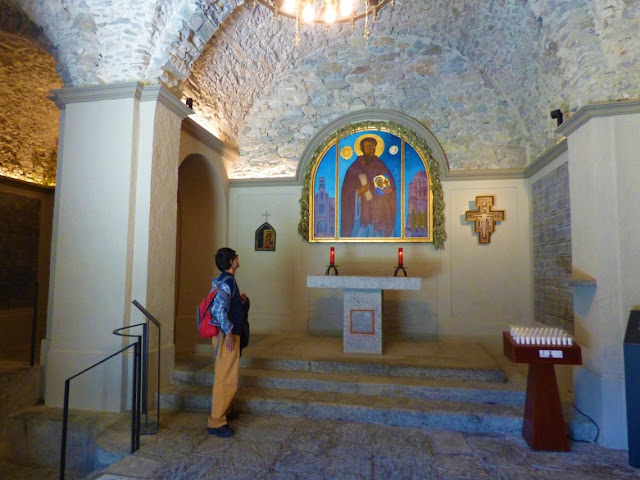






























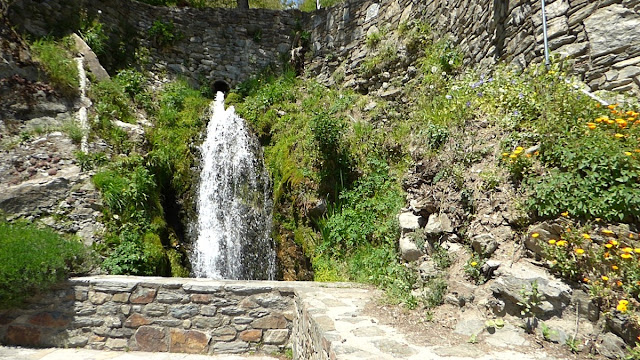
















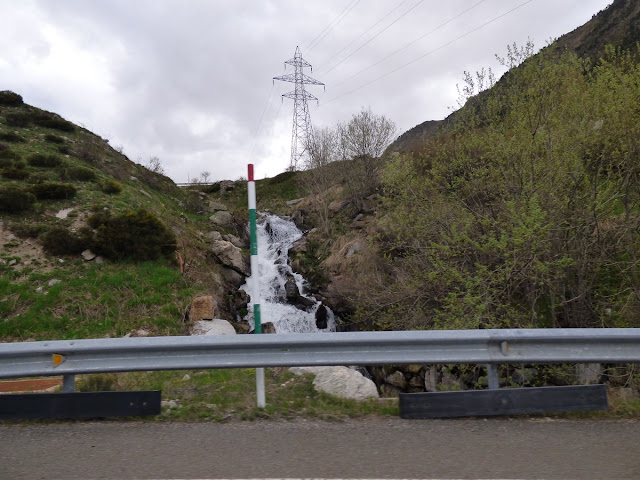





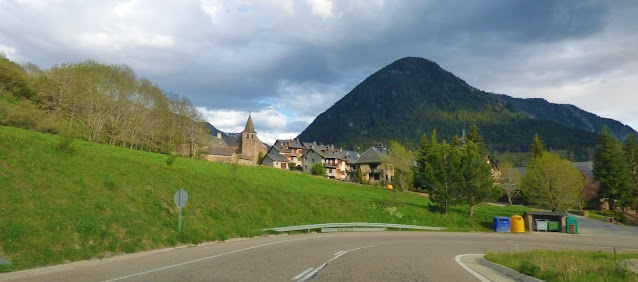



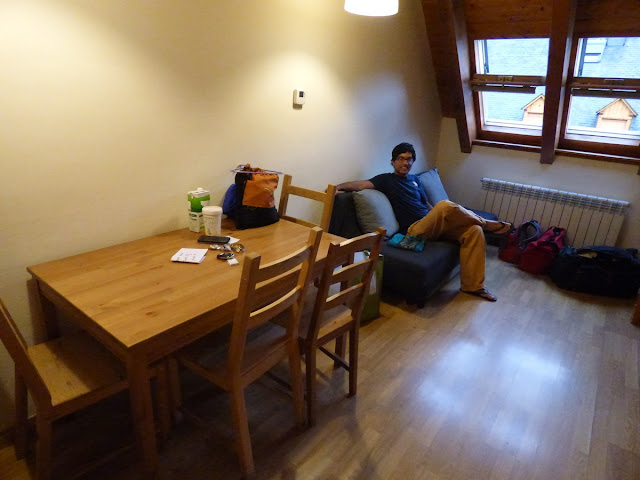


No comments:
Post a Comment